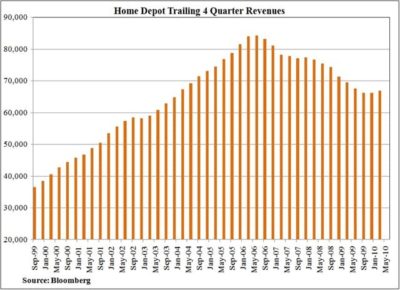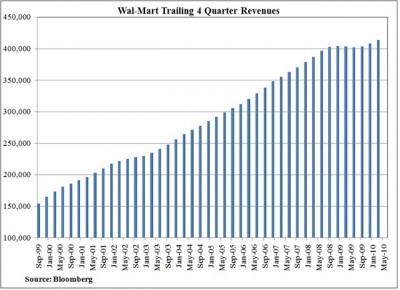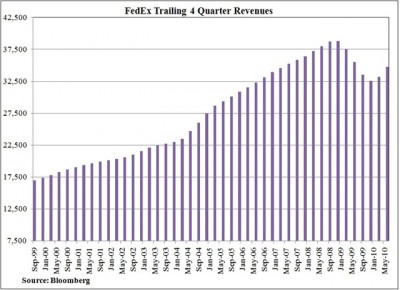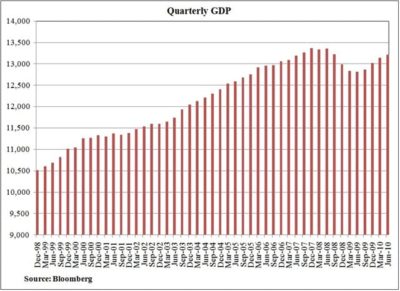Tepid Top Lines
The market is engaged in a discussion over what the Federal Reserve will do next. St. Louis Fed president James Bullard published a provocative paper about ratcheting up quantitative easing to avoid the Japanese dilemma. Conversely, Philly Fed president Charles Plosser has said that any more stimulus at this juncture would be premature. Chairman Bernanke is sticking to the script of being alert to any change in the call for slow but steady growth, and yet the front page of today’s Wall Street Journal lays out the argument for growing the Fed’s balance sheet. Mix in the chatter about extending Bush-era tax policies and rumors of a government-instigated refinancing boom and the discussion has become a full-blown debate.
Perhaps the Fed and its various talking heads can be accused of stirring this particular pot; however this could be more a case of some market participants wanting to avoid another leg down in this multi-year process of deleveraging, falling asset prices and reduced consumption. This morning’s income and spending data show an increase in the savings rate to 6.4%, the highest since May 2009 and before that 1993. Consumer credit continues to decline and will likely show another drop when it is released on Friday. The second quarter GDP preliminary estimate showed growth slowed as consumer spending declined and inventory building subsided. Job growth is still not happening.
So we suppose the debate is timely. Despite the fact that earnings have topped analysts’ average estimates at 76% of S&P 500 companies that have released their quarterly results, we believe that we are indeed in a part of the economic cycle where muddling along might be the best possible outcome while the financial system—corporations, banks, households, municipalities—get their houses in order. The revenue numbers of corporate bellwethers reflect that. The following graphs lay out the trailing 4-quarter top line for Procter & Gamble, Home Depot, Wal-Mart and FedEx. Taken together they tell a story (which we will resume below).
The story to be gleaned here is that the enormous top line growth that these companies enjoyed were inextricably linked to the economic growth we have witnessed since the end of the 2001 recession—not coincidentally, the graphs above look a lot like the graph below of nominal GDP growth (particularly Wal-Mart….hmmm…). And that economic growth, we would suggest, was largely built on the growth in credit (as we wrote in our June 8, 2010 blog post, "Debt Growth Drives GDP Growth" ). So without debt growth, what is going to get the revenue trajectory on track again? Maybe, just maybe, the thing to do is let the deleveraging/saving/expense cutting process take place. Just as forest fires are a part of the natural life cycle of forests, so is the cleansing and seeding process of an economic downturn.





Comments are closed.